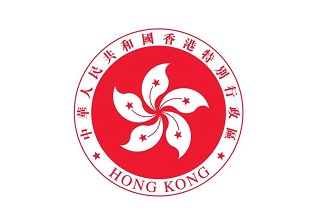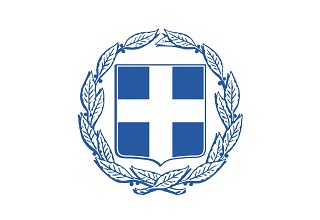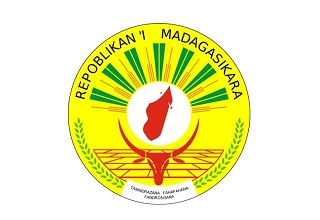Regarding the Inspection and Quarantine Requirements for Mutton from Namibia to China
I. Inspection and quarantine basis
(I) Laws and regulations.
"Food Safety Law of the People's Republic of China" and its implementing regulations, "Law of the People's Republic of China on Entry and Exit Animal and Plant Quarantine" and its implementing regulations, "Law of the People's Republic of China on Import and Export Commodity Inspection" and its implementing regulations, "Special Provisions of the State Council on Strengthening the Supervision and Management of Food and Other Product Safety", "Measures for the Administration of Import and Export Food Safety of the People's Republic of China" and "Regulations on the Registration and Administration of Overseas Production Enterprises of Imported Food of the People's Republic of China".
(II) Bilateral protocol.
"Protocol on Inspection, Quarantine and Sanitation Requirements for the Import of Sheep and Goat Meat from Namibia into China between the General Administration of Customs of the People's Republic of China and the Ministry of Agriculture, Water Resources and Land Reform of the Republic of Namibia".
II. Products allowed to be imported
The sheep meat allowed to be imported refers to frozen and chilled (boneless and bone-in) sheep and goat meat (skeletal muscles after the sheep is slaughtered and bled to remove the hair, viscera, head and tail and limbs (wrist and below the joints)).
Throat, tongue, minced meat, minced meat, ground meat, scraps, mechanically separated meat and other by-products should be removed together and are not allowed to be imported into China.
III. Requirements for production enterprises
Mutton enterprises exporting to China (including slaughtering, cutting, processing and storage enterprises) should be located in non-immune and disease-free areas recognized by the World Organization for Animal Health (WOAH), under the supervision of the Ministry of Agriculture, Water Resources and Land Reform of Namibia, and comply with the requirements of relevant veterinary health and public health regulations of China and Namibia.
Mutton enterprises exporting to China must be registered with the Chinese Customs. Only mutton produced by enterprises approved for registration from the date of registration can be exported to China.
IV. Inspection and quarantine requirements
(I) Animal disease management.
1. There is no scrapie, sheep pox, goat pox and peste des petits ruminants in Namibia.
2. Namibia implements regional management of foot-and-mouth disease and is recognized by WOAH.
(II) Conditions that live sheep must meet for slaughter
1. Born, raised and slaughtered in the Namibian foot-and-mouth disease-free zone recognized by WOAH and China Customs, with a unique identity that can be traced back to the farm where it was born and raised.
2. From a farm that has not introduced any even-toed ungulates from areas or countries outside the Namibian foot-and-mouth disease-free zone within 12 months before slaughter.
3. From a farm that has not had clinical cases of bluetongue, Rift Valley fever, tuberculosis, paratuberculosis, rabies, anthrax, sheep brucellosis, sheep hemorrhagic septicemia, granulosus echinococcosis, and sheep abortion Salmonella within 12 months before slaughter.
4. From a place that has not been subject to quarantine restrictions or monitoring due to other reportable sheep diseases stipulated by China, Namibia animal health regulations and WOAH within 6 months before slaughter.
5. Raised on the last farm for at least 60 days before slaughter.
6. No anthrax live vaccine and sheep pox and goat pox vaccines have been vaccinated at least 15 days before slaughter.
7. Never feed feed containing ruminant meat and bone meal and oil residue.
8. Never use veterinary drugs and feed additives prohibited by both parties.
(III) Processing process requirements.
1. Live sheep slaughtered for the production of mutton exported to China:
(1) Slaughtered, processed and stored by enterprises registered with the Chinese Customs.
(2) Pre-slaughter and post-slaughter inspections are carried out on sheep used for the production of mutton exported to China in accordance with the relevant laws and regulations of China and Namibia, and the results are qualified. Proof that all slaughtered sheep are healthy, without any clinical symptoms of infectious diseases or parasitic diseases, without pathological changes in the carcass and organs, and the main lymphatic and glandular tissues on the carcass have been removed.
2. After slaughter and before cutting, the carcass of sheep shall be pre-cooled and matured at a temperature above 2°C for at least 24 hours, and the core temperature of the meat shall be between 2°C and 4°C during the corresponding time. Check the pH value of the center of the longissimus dorsi muscle of the carcass one by one to be below 6.0.
3. The mutton exported to China implements the Namibian National Residue Monitoring Program to prove that the residues of veterinary drugs, pesticides, heavy metals, persistent organic pollutants and other toxic and hazardous substances in the product do not exceed the maximum limits of China and Namibia.
4. The mutton exported to China is not contaminated by pathogenic microorganisms and meets the requirements of Chinese and Namibian laws.
5. During the epidemic of major public health diseases, enterprises shall formulate necessary meat safety prevention and control measures in accordance with relevant international regulations and standards to ensure that the meat is not cross-contaminated during the entire process of raw material reception, processing, packaging, storage and transportation.
6. The product is hygienic, safe and suitable for human consumption.
(IV) Storage requirements.
In the frozen or chilled warehouse where mutton is stored, a special area for storing mutton exported to China should be set up and clearly marked.
V. Certificate requirements
Each container of mutton exported to China shall be accompanied by at least one original veterinary health certificate to prove that the batch of products complies with the veterinary and public health laws and regulations of China and Namibia and the relevant provisions of the Protocol.
The veterinary health certificate shall be written in Chinese and English (English is required when filling in the certificate content). The format and content of the veterinary health certificate must be approved by both parties in advance.
The Namibian Ministry of Agriculture, Water Resources and Land Reform shall provide the inspection and quarantine stamp impression, veterinary health certificate sample, list of authorized visa veterinarians and corresponding signature style, anti-counterfeiting mark description, certificate electronic information sending email name and other information to China Customs for filing (if applicable). If the electronic information of the certificate is sent, it shall be sent to China Customs through the designated channel of China Customs within 48 hours after the issuance of the certificate. If there is any change or modification, it shall be notified to China Customs at least one month in advance.
The Namibian Ministry of Agriculture, Water Resources and Land Reform shall promptly send the electronic information of the issued veterinary health certificate to China Customs through official channels so that China Customs can verify it during import. The Namibian Ministry of Agriculture, Water Resources and Land Reform shall ensure the accuracy and security of the electronic information.
VI. Packaging, storage, transportation and labeling requirements
Lamb exported to China shall be packaged with new materials that meet the Chinese national food safety standards and Namibian standards. Lamb exported to China shall have a separate inner packaging, and the inner packaging shall be marked with the product name, country of origin, manufacturer registration number, and production batch number in Chinese and English. The outer packaging shall indicate the product name, product specifications, place of origin (specific to state/province/city), manufacturer registration number, production batch number, destination (destination shall be indicated as the People's Republic of China), production date (year/month/day), shelf life, storage temperature, etc. in Chinese and English, and shall be affixed (pasted or printed) with the official inspection and quarantine mark. Pre-packaged mutton products shall also comply with the requirements of China's laws, regulations and standards on pre-packaged food labels.
The entire process of mutton exported to China, from packaging, storage to transportation, shall comply with the relevant health requirements of China and Namibia to prevent contamination by pathogenic microorganisms or toxic and harmful substances. The storage and transportation of mutton should be carried out under the corresponding temperature conditions. The central temperature of frozen mutton should not be higher than minus 15°C, and the central temperature of chilled mutton should be between 0-4°C.
After the goods are loaded into the container (sea or air), they shall be sealed under the supervision of the official veterinarian of Namibia, and the seal number shall be indicated in the veterinary health certificate. The packaging shall not be opened or replaced during transportation.
GACC
Sep. 23, 2024




